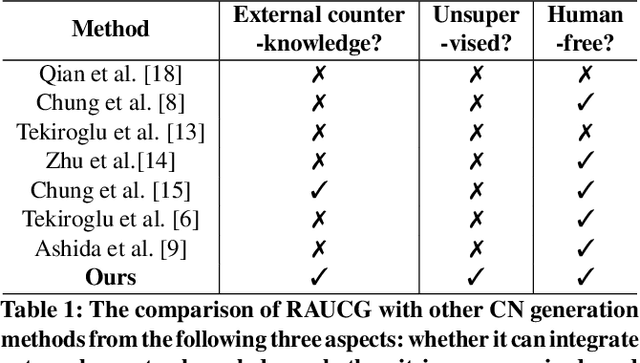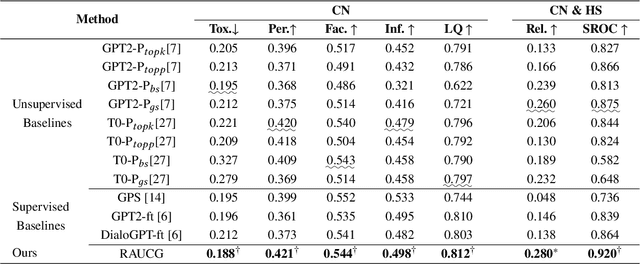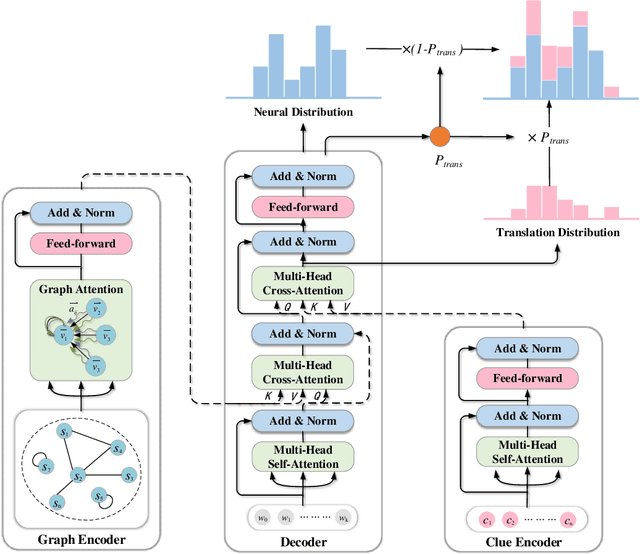Wenxian Wang
RAUCG: Retrieval-Augmented Unsupervised Counter Narrative Generation for Hate Speech
Oct 09, 2023



Abstract:The Counter Narrative (CN) is a promising approach to combat online hate speech (HS) without infringing on freedom of speech. In recent years, there has been a growing interest in automatically generating CNs using natural language generation techniques. However, current automatic CN generation methods mainly rely on expert-authored datasets for training, which are time-consuming and labor-intensive to acquire. Furthermore, these methods cannot directly obtain and extend counter-knowledge from external statistics, facts, or examples. To address these limitations, we propose Retrieval-Augmented Unsupervised Counter Narrative Generation (RAUCG) to automatically expand external counter-knowledge and map it into CNs in an unsupervised paradigm. Specifically, we first introduce an SSF retrieval method to retrieve counter-knowledge from the multiple perspectives of stance consistency, semantic overlap rate, and fitness for HS. Then we design an energy-based decoding mechanism by quantizing knowledge injection, countering and fluency constraints into differentiable functions, to enable the model to build mappings from counter-knowledge to CNs without expert-authored CN data. Lastly, we comprehensively evaluate model performance in terms of language quality, toxicity, persuasiveness, relevance, and success rate of countering HS, etc. Experimental results show that RAUCG outperforms strong baselines on all metrics and exhibits stronger generalization capabilities, achieving significant improvements of +2.0% in relevance and +4.5% in success rate of countering metrics. Moreover, RAUCG enabled GPT2 to outperform T0 in all metrics, despite the latter being approximately eight times larger than the former. Warning: This paper may contain offensive or upsetting content!
ClueGraphSum: Let Key Clues Guide the Cross-Lingual Abstractive Summarization
Mar 09, 2022



Abstract:Cross-Lingual Summarization (CLS) is the task to generate a summary in one language for an article in a different language. Previous studies on CLS mainly take pipeline methods or train the end-to-end model using the translated parallel data. However, the quality of generated cross-lingual summaries needs more further efforts to improve, and the model performance has never been evaluated on the hand-written CLS dataset. Therefore, we first propose a clue-guided cross-lingual abstractive summarization method to improve the quality of cross-lingual summaries, and then construct a novel hand-written CLS dataset for evaluation. Specifically, we extract keywords, named entities, etc. of the input article as key clues for summarization and then design a clue-guided algorithm to transform an article into a graph with less noisy sentences. One Graph encoder is built to learn sentence semantics and article structures and one Clue encoder is built to encode and translate key clues, ensuring the information of important parts are reserved in the generated summary. These two encoders are connected by one decoder to directly learn cross-lingual semantics. Experimental results show that our method has stronger robustness for longer inputs and substantially improves the performance over the strong baseline, achieving an improvement of 8.55 ROUGE-1 (English-to-Chinese summarization) and 2.13 MoverScore (Chinese-to-English summarization) scores over the existing SOTA.
 Add to Chrome
Add to Chrome Add to Firefox
Add to Firefox Add to Edge
Add to Edge